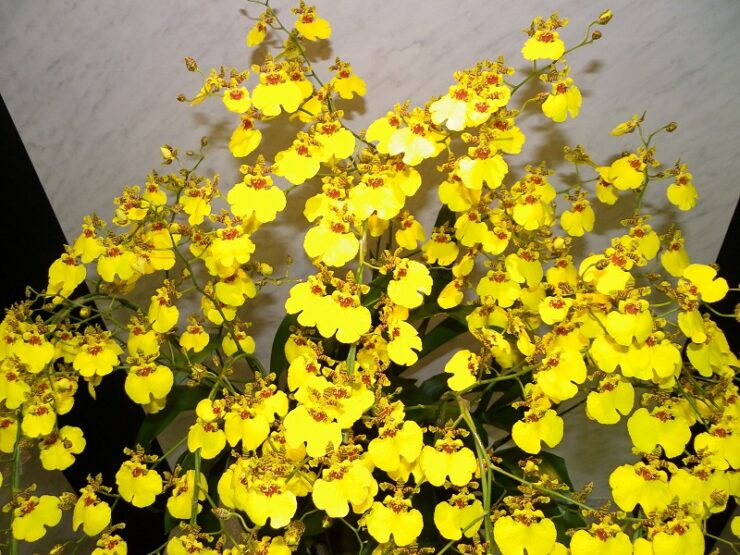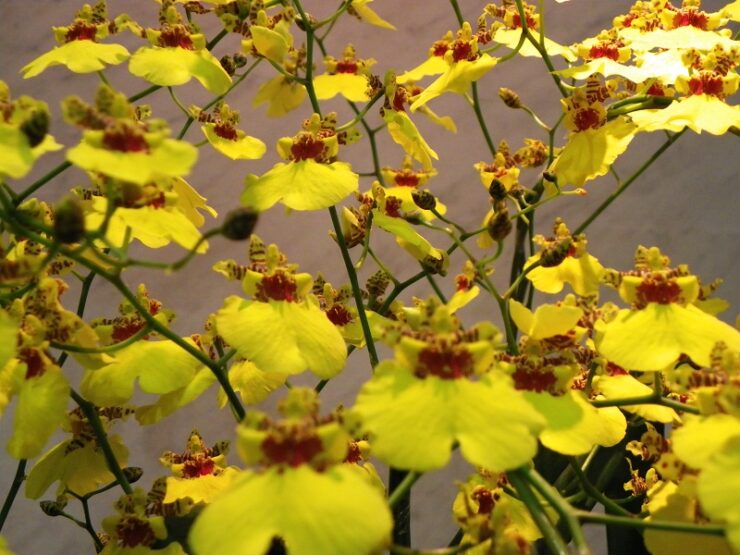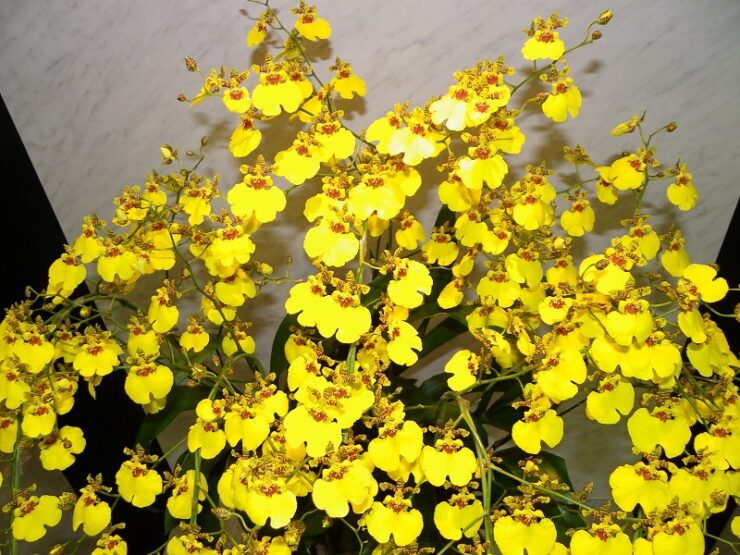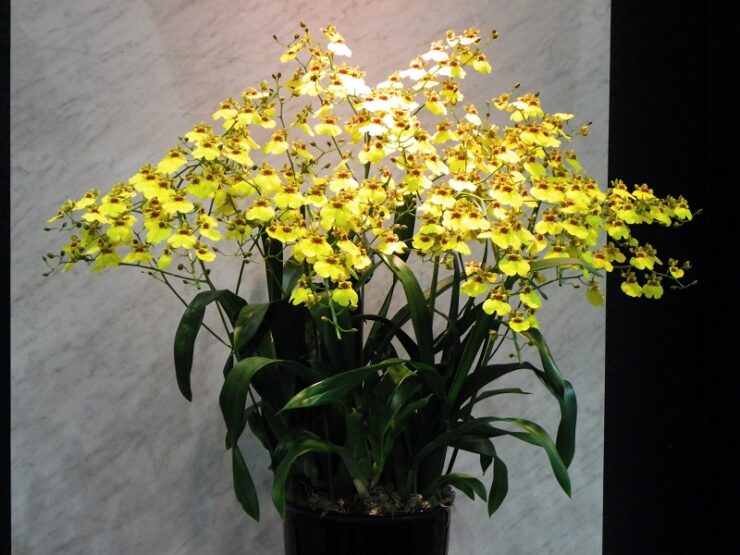In this article, we will explore the captivating allure and significance of the September birth orchid, known as the Oncidium, which occupies a cherished position in the realm of flowers and is highly esteemed for its striking appearance and cultural symbolism.
The Oncidium, also referred to as the “dancing lady” orchid, is a popular choice among orchid aficionados due to its intricate, yet eye-catching appearance, with blossoms that come in a variety of hues such as yellow, gold, pink, red, and even chocolate brown.
Beyond its aesthetic charm, this orchid also holds cultural importance in different parts of the world, with some societies associating it with love, beauty, and strength, while others view it as a symbol of elegance and grace.
As we delve deeper into the September birth-orchid, we will uncover the various meanings and customs linked to this extraordinary flower.
History of the Orchid

The Oncidium is a fascinating genus of orchids with a rich history dating back centuries. Native to the tropical and subtropical regions of Central and South America, Oncidium orchids have captivated the hearts of people across the globe with their intricate, dancing lady-like flowers.
The name Oncidium is derived from the Greek word “onkos,” which means “swelling” or “mass.” This refers to the callus or the lip of the flower, a distinctive feature found in many Oncidium species. The genus was first described by the Swedish botanist Olof Swartz in 1800, and since then, the number of species classified under Oncidium has grown to over 300, with countless hybrids and varieties.
During the Victorian era, the fascination with orchids, including Oncidiums, reached new heights. Collectors and horticulturists from Europe ventured into the tropical regions of Central and South America in search of rare and exotic species. This period, known as “Orchidelirium,” saw a boom in the cultivation and trade of orchids, with Oncidiums being a prominent part of this craze.
As orchid cultivation techniques improved over time, Oncidiums became more accessible and popular among hobbyists. Today, they are widely cultivated in various parts of the world, with enthusiasts breeding new hybrids to create stunning combinations of colors, patterns, and shapes.
The Oncidium orchid’s popularity is not only due to its stunning appearance but also its resilience and adaptability. Many species can tolerate a range of growing conditions, making them an excellent choice for both novice and experienced growers.
Symbolism and Cultural Significance
They have long held symbolic and cultural significance across various societies and traditions. Their unique beauty, intricate shapes, and the wide variety of colors they display have made them captivating and meaningful symbols in different contexts. Let’s explore some of the key aspects of Oncidium orchids’ symbolism and cultural significance:
- Love and beauty: Oncidium orchids, with their delicate and graceful appearance, are often associated with love and beauty. Their stunning flowers, resembling dancing ladies, evoke a sense of elegance and romanticism, making them popular choices for wedding decorations, bouquets, and as gifts for loved ones.
- Strength and resilience: Oncidium orchids are known for their ability to adapt to a variety of growing conditions and environments. This resilience has led to their association with strength and determination. The symbolism of strength is particularly fitting for the September birth orchid, representing those born in this month as strong and adaptable individuals.
- Fertility and abundance: In some cultures, Oncidium orchids are believed to symbolize fertility and abundance. This is attributed to their prolific flowering habit and the wide variety of species and hybrids found within the genus. They are often used in ceremonies and rituals to invoke blessings of prosperity and growth.
- Elegance and grace: Oncidium orchids are admired for their intricate flowers and elegant appearance. This has led to their association with refinement and grace, making them a popular choice for ornamental displays in homes, offices, and public spaces.
- Friendship and connection: The delicate, interconnected nature of Oncidium orchid flowers serves as a reminder of the importance of relationships and connections between people. Gifting Oncidium orchids can be a symbol of friendship and appreciation for the bond shared between individuals.
Medicinal Purposes

While scientific research on the therapeutic properties of Oncidium orchids specifically is limited, there is a long history of orchids being utilized for their potential health benefits. Some of the medicinal purposes attributed to orchids in general, and occasionally to Oncidium species, include the following:
- Aphrodisiac: In some cultures, orchids have been used as aphrodisiacs, believed to enhance libido and improve sexual health. Certain compounds found in orchids, such as phenanthrenes, have been linked to these effects.
- Antioxidant properties: Some orchid species contain bioactive compounds with antioxidant properties that can help protect cells from damage caused by free radicals. These antioxidant properties have been attributed to better overall health and the prevention of certain diseases.
- Anti-inflammatory and pain-relief: Orchids have been used in traditional medicine for their potential anti-inflammatory and pain-relief properties. Some compounds found in orchids, such as bibenzyls and phenanthrenes, have been shown to exhibit these effects.
- Immune system support: Orchids have been used in traditional medicine to support and strengthen the immune system, particularly in the context of traditional Chinese medicine. Certain orchid species are believed to help enhance the body’s natural defenses against illnesses and infections.
- Digestive health: Some orchid species have been used to treat gastrointestinal issues, such as constipation, indigestion, and stomach pains. They are believed to help promote healthy digestion and improve overall gut health.
Oncidium Care
Oncidium orchids are known for their adaptability and resilience, making them suitable for both novice and experienced growers. However, to ensure their health and encourage optimal blooming, it is essential to provide proper care. Here are some key aspects to consider when caring for Oncidium orchids:

Light:
Oncidium orchids require bright, indirect light to thrive. Placing them near an east or west-facing window is ideal. Be cautious of direct sunlight, as it can scorch the leaves. If the leaves turn yellow or appear burnt, the orchid may be receiving too much direct sunlight.
Temperature:
Oncidium orchids generally prefer intermediate temperatures, with daytime temperatures between 65-75°F (18-24°C) and nighttime temperatures between 55-60°F (13-16°C). Some species and hybrids can tolerate slightly warmer or cooler conditions, but it’s essential to research the specific requirements of the Oncidium you’re growing.
Watering:
Oncidium orchids prefer to stay evenly moist but not soggy. Water your orchid when the top inch of the potting medium feels dry to the touch. It is better to underwater slightly than to overwater, as excess moisture can lead to root rot.
Humidity:
Oncidium orchids appreciate humidity levels between 40-60%. To maintain proper humidity, you can place the orchid on a tray filled with water and pebbles, ensuring the pot doesn’t sit directly in the water. Alternatively, you can use a humidifier or mist the orchid regularly.
Potting medium and repotting:
Oncidium orchids are typically epiphytic, which means they grow on trees or rocks in their natural habitat. Therefore, they require a well-draining potting medium, such as a mix of bark, perlite, and sphagnum moss. Repot your Oncidium orchid every 1-2 years, as the potting medium begins to break down. This is also an opportunity to trim away any damaged or dead roots and divide the plant if necessary.
Fertilizing:
Fertilize your Oncidium orchid every two weeks during the growing season using a balanced orchid fertilizer, diluted to half the recommended strength. Reduce the frequency to once a month during the cooler months.
Pruning and grooming:
After the Oncidium orchid has finished blooming, you can trim the flower spike back to the base of the plant. This encourages new growth and future blooms. Remove any dead leaves or pseudobulbs to maintain the plant’s health and appearance.
By providing proper care and closely monitoring your Oncidium orchid’s needs, you can enjoy the stunning beauty of its intricate, dancing lady-like flowers for years to come.
Fun Facts

Here are some fun facts about Oncidium orchids:
- Dancing ladies: Oncidium orchids are often referred to as “dancing lady” orchids because their unique flower shape resembles a lady with a flowing skirt, as if in motion. This charming nickname adds to the appeal of these captivating plants.
- Diverse genus: The Oncidium genus consists of over 300 species and countless hybrids. They come in various sizes, shapes, and colors, making them a versatile and exciting group of plants for collectors and enthusiasts.
- Epiphytic growth: Many Oncidium orchids are epiphytes, which means they grow on other plants, such as trees, in their natural habitat. This adaptation allows them to absorb moisture and nutrients from the air and surrounding environment, rather than relying solely on the soil.
- Pseudobulbs: Oncidium orchids possess unique structures called pseudobulbs, which are swollen stems that store water and nutrients. These pseudobulbs help the plant survive in times of drought or when resources are scarce.
- Pollination strategies: Oncidium orchids have developed interesting pollination strategies, often relying on specific pollinators such as bees or butterflies. Some species produce fragrances or nectar to attract these pollinators, while others have evolved flower shapes that mimic the appearance of insects to encourage pollination.
- Orchid pseudocopulation: Some Oncidium species, such as Oncidium klotzscheanum, engage in a fascinating process called pseudocopulation. The flowers of these species mimic female insects, tricking male insects into attempting to mate with them. In doing so, the male insects inadvertently transfer pollen from one flower to another, facilitating pollination.
- Long-lasting blooms: Oncidium orchids are known for their long-lasting blooms, with some flowers lasting for several weeks or even months. This makes them a popular choice for ornamental displays and gifts.
FAQ
What are the ideal light conditions for Oncidium orchids?
Oncidium orchids require bright, indirect light to thrive. Placing them near an east or west-facing window is ideal. Avoid direct sunlight, as it can scorch the leaves. If the leaves turn yellow or appear burnt, the orchid may be receiving too much direct sunlight.
How often should I water my Oncidium orchid?
Water your Oncidium orchid when the top inch of the potting medium feels dry to the touch. They prefer to stay evenly moist but not soggy. It is better to underwater slightly than to overwater, as excess moisture can lead to root rot.
How do I increase humidity for my Oncidium orchid?
Oncidium orchids appreciate humidity levels between 40-60%. To maintain proper humidity, you can place the orchid on a tray filled with water and pebbles, ensuring the pot doesn’t sit directly in the water. Alternatively, you can use a humidifier or mist the orchid regularly.
When should I repot my Oncidium orchid?
Repot your Oncidium orchid every 1-2 years, as the potting medium begins to break down. This is also an opportunity to trim away any damaged or dead roots and divide the plant if necessary.
How do I fertilize my Oncidium orchid?
Fertilize your Oncidium orchid every two weeks during the growing season using a balanced orchid fertilizer, diluted to half the recommended strength. Reduce the frequency to once a month during the cooler months.
Can I propagate my Oncidium orchid by division?
Yes, you can propagate Oncidium orchids by division. During repotting, carefully separate the plant into smaller sections, each with at least one healthy pseudobulb and a good root system. Plant each division in its own pot, using a well-draining potting medium.
Conclusion
September birth-orchid, Oncidium, holds a unique and enchanting place in the world of flowers. Its captivating beauty, intricate shapes, and diverse range of colors make it a popular choice among orchid enthusiasts and an important symbol in various cultures.
The resilience and adaptability of Oncidium orchids make them ideal for both novice and experienced growers, providing an opportunity to enjoy their stunning blooms for years to come.
By understanding the history, symbolism, and cultural significance of this remarkable flower, we can appreciate its true value and the profound impact it has had on people throughout the centuries.
So, whether you’re gifting an Oncidium orchid to a loved one, incorporating it into a special event, or simply enjoying its beauty in your own home, the Oncidium orchid serves as a timeless reminder of love, strength, and the wonders of nature.
If you like this article read more here about July and April birth orchids.
